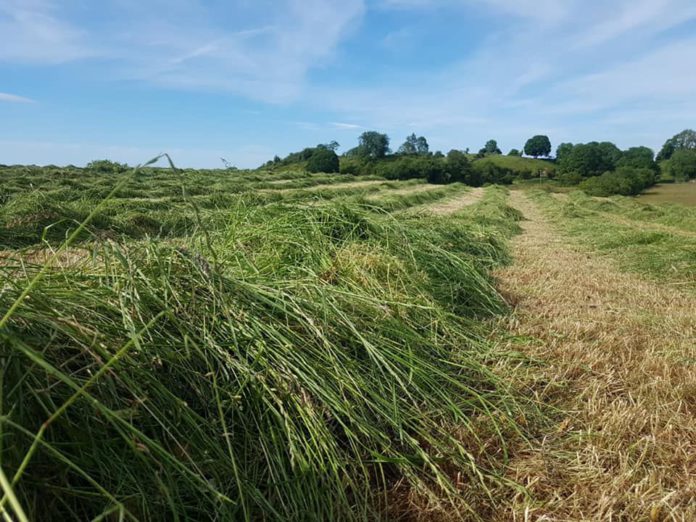Reducing meal requirements over the winter and improved cattle weight gains of 0.6kg/head/day during this period are among the benefits of making good-quality silage.
That is according to Teagasc’s Shane Devaney, who stated that this will equate to a weight gain of 90kgs over 150-days.
The Longford-based advisor has urged farmers to complete a fodder budget for next winter to calculate the amount of silage to determine the number of fields you should close.
Devaney advises farmers to target cutting before May 20th, as this will achieve a DMD of 75%+.
In a video on the state agency’s social media channels, he said:
“Each one week delay after this in cutting silage will result in a drop of 2-3% DMD in quality. Aim to graze off all your silage ground as this cleans off any poor-quality grass which is growing during the winter months.”
“This can result in a drop in DMD of up to 5-7 units. Apply 2,500 gallons of slurry per acre. Cattle slurry has a good balance of N, P and K, which is nitrogen, phosphorus and potash.”
“By using a trailing shoe or a dribble bar, you will get an extra 3 units per 1,000 gallons of slurry applied. Seven to ten days later, apply 50-60 units of straight nitrogen per acre.”
“Aim to cut silage during dry weather and allow to wilt for between 24-36 hours before making bales or drawing it to the pit,” he concluded.
Other articles on That’s Farming:
Earlier this year, we featured an article from Volac silage specialist, Ken Strout, who provided readers with a timely five-point plan.
To make good quality silage, he advises farmers to:
- Review your silage analysis;
- Communicate with your contractor;
- Prepare the clamp;
- Have materials ready;
- Have a ‘Plan B’.
You can read this news article.
Meanwhile, in this article, Austin Callaghan, drystock advisor, Teagasc Claremorris, discusses closing silage fields and adequately fertilising crops with nitrogen, phosphorus, potassium, and sulphur. Read more.





